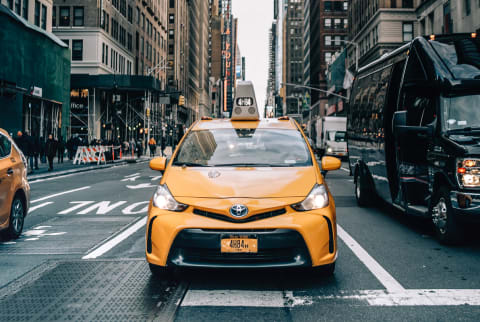Advertisement
Research Shows Looking Left Might Add Years To Your Life


The reason bungee jumping, swimming with sharks, and skydiving are considered bucket-list adventures and not everyday activities—for most of us at least—is because of their death-defying qualities. But, if that's the case, should we just as sparingly be getting behind the wheel of a car? According to longevity expert Peter Attia, M.D., automotive deaths are more prevalent than we may think, but the simple act of looking left might reduce those rates.
How can looking left help?
Just like we learned as children, when crossing an intersection, always look both ways. But more importantly, always look left first. According to the U.S. Department of Transportation (DOT), "A significant proportion of intersection crashes involve left turns."
Proactively turning left to make sure another driver isn't breaking the rules of the road can help prevent a collision. According to Attia, more automotive accidents occur in intersections (20%) compared to on freeways (18%), so it's safe to assume the designs of each roadway might be a contributing factor in car crashes.
In an intersection, drivers are often turning in front of oncoming traffic, as opposed to freeways, where everyone is headed in the same direction. Attia wrote in a blog post, "A driver is most likely going to be struck near the driver's side by another vehicle, otherwise known as a broadside or T-bone crash."
In the same post, Attia demonstrates a variety of potential intersection crashes. In each one, the driver with the right of way would be killed from direct impact on the left side, and the other driver is usually running a red light or a stop sign. But those scenarios refer to intersection crashes, not T-junction crashes.
What causes a T-junction crash?
Human error is the primary cause of these accidents. According to DOT, T-junction collisions can be caused by drivers' perception failures, including "looked but did not see" encounters, visual obstructions, and poor judgment of the speed or distance of an oncoming car.
The other three main causes of accidents and automotive deaths include:
- Speeding, which accounts for 30% of all drivers killed, according to Attia.
- Driving under the influence1, which includes both alcohol and drugs.
- Distracted driving, including talking or texting on a cellphone, swerving in and out of lanes, and general careless driving.
While you can—and should—prevent avoidable actions, like the three above, it's impossible to know if other drivers will make the same responsible decisions. Simply being more aware of drivers coming toward you and always looking left can help reduce your risk of an automotive injury or death. If it feels safer and you're not going too far, try walking instead—it might help you meet your recommended number of steps.